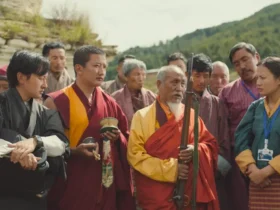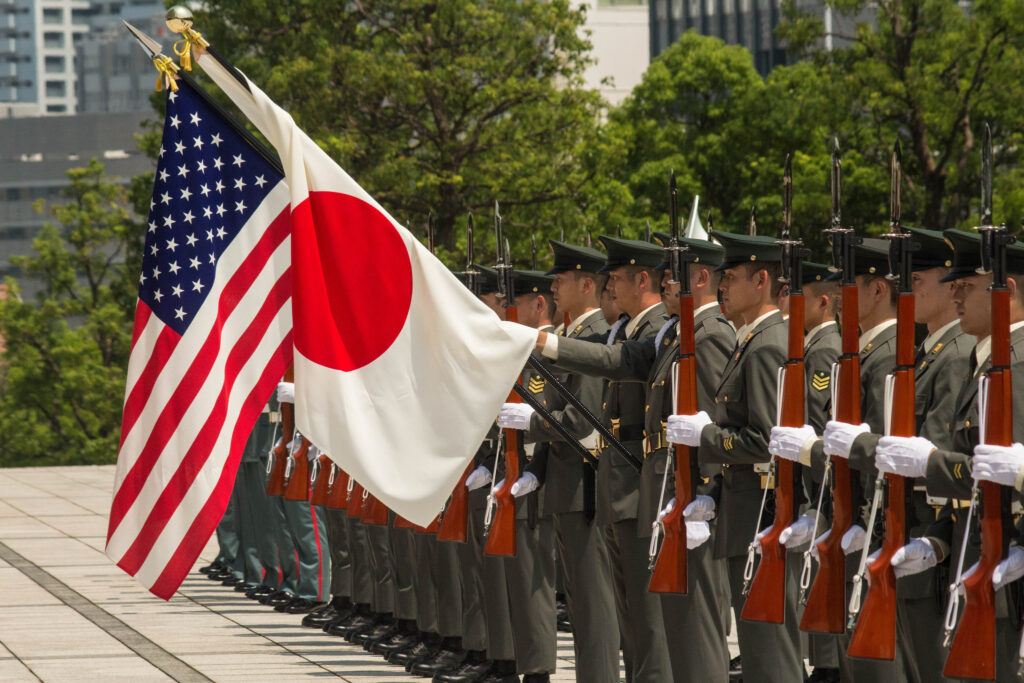Its three branches reaching the border of the province,
Its nine streams touching the gateways of the city,
This river runs beyond heaven and earth,
Where the color of the mountains both is and is not.
The dwellings of men seem to float
On ripples of distant sky –
These beautiful days here in the city
Make drunken my old mountain heart!
–Wang Wei

It’s difficult to do justice to Hong Kong. It is one of the densest places in the world with seven million calling a city of 1100 square kilometers home (6550 people per square kilometer). This teeming island city is the quintessential urban jungle, a vast forest of concrete and neon lights, juxtaposed by expansive ocean and forested peaks. Visitors are taken aback by “the world’s most beautiful skyline” and delight in navigating the Constantinople of our times.
But one particular aspect of Hong Kong is especially fascinating. While Hong Kong, like any other city, is a place you could easily get lost in, it is also a city where you can easily lose a sense of space. As much as you move left and right, you are also moving rapidly up and down.

This is a phenomenon unique to Hong Kong. Urbanists seeking answers have described Hong Kong as lacking the traditional concept of ‘ground’. In the majority of cities around the world, one primarily moves laterally. If one goes up and down, it is usually in an isolated skyscraper or down to a subway station. Connectivity, and thereby movement of people, relies on channels situated on a planar ‘ground’, usually roads, pedestrian walkways and street-level public spaces.
In Hong Kong however, civic life thrives not just on the street level, but also in spaces suspended in the sky and in corridors three stories underground. Subway stations become extensive shopping centers, providing convenience stores for busy office workers scurrying home. Central, Hong Kong’s central business district, is punctuated by sky walkways, allowing citizens easy access between skyscrapers and the ability to cross highways and roads. In Soho, one finds moving sidewalks snaking up the side of Victoria Peak. The Hopewell Center, embracing the Peak, has two entryways and lobbies, one 17 floors above the other, allowing visitors convenient access to two different parts of the Wan Chai District.
Any walking trip from Point A to Point B in Hong Kong may require much vertical movement. More than any other urban center on Earth, Hong Kong is a three-dimensional city.
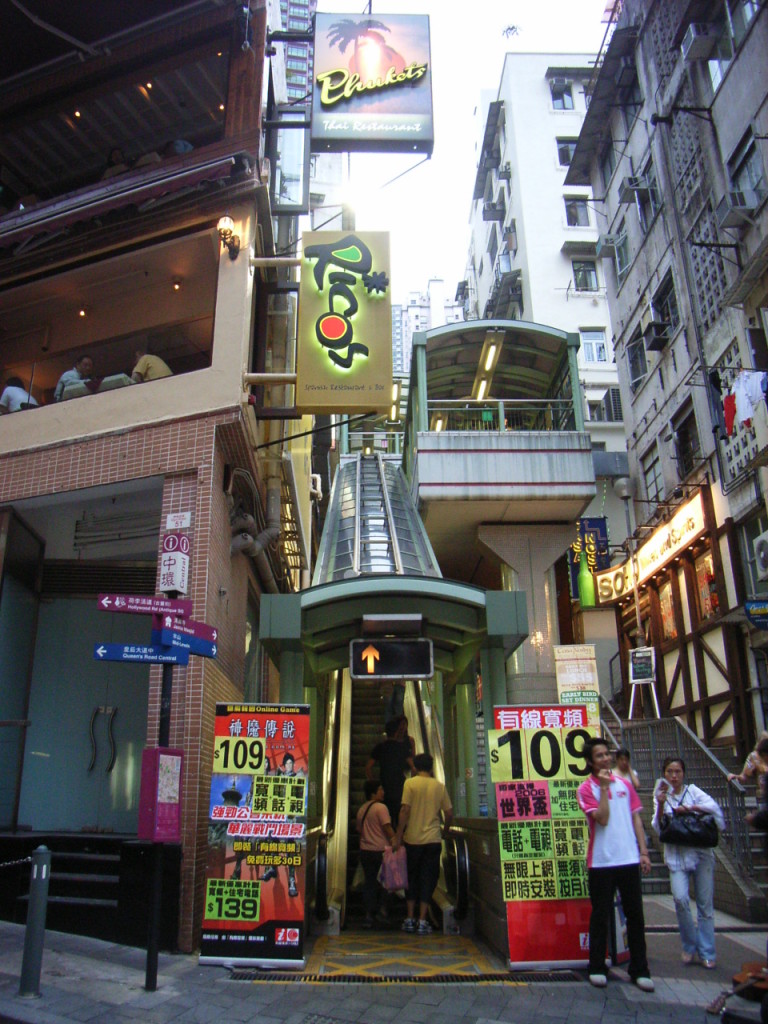
In creating this unique urban configuration, Hong Kong is mostly an ‘accidental pioneer’. A tiny colony on a rock that was trapped between a Communist giant and the Pacific, quick adaptation was the key to survival. All forces, natural and human, conspired to spell Hong Kong’s failure.
It is a city faced with a difficult situation of high population density on limited space. Numerous mountains and uneven hills rivet what little land the city has, which further constrains development potential. Typhoons are common in the summer, and poor infrastructure at the time meant frequent flooding and mudslides.
Compounding geographic difficulties, social chaos and highly strained resources characterized the post-Japanese Occupation era of Colonial Hong Kong. Refugees from World War II swelled with refugees fleeing a newly Communist China. A transformed China also stripped Hong Kong of its purpose. It had served as the West’s entrepôt to China much like Shanghai in colonial times. With a China then closed off to the capitalist West, Hong Kong once again became an unproductive rock in the ocean.
Despite all these difficulties, Hong Kong eventually developed into one of the successful newly industrialized countries called the Four Asian Tigers (the others being Taiwan, South Korea and Singapore), specializing in light industry. Economists in the West heralded the Four Asian Tigers as model economies, correctly pursuing export-oriented development by finding a niche in the global economy and then practicing free trade to quickly gain prosperity. When China re-opened in the late 20th century, Hong Kong once again found its niche as an entrepôt to the Mainland, and Hong Kong boomed as the financial center of Asia. Hong Kong was and is still upheld as an example of a successful laissez-faire system, with high business competitiveness, low taxes, loose customs and a thriving financial sector.
Like the other Asian Tigers, however, the truth is more nuanced. While most trumpet the success of laissez-faire economics in shaping the city of Hong Kong, in truth, Hong Kong can thank a large part of its own prosperity on sound governmental decision-making.
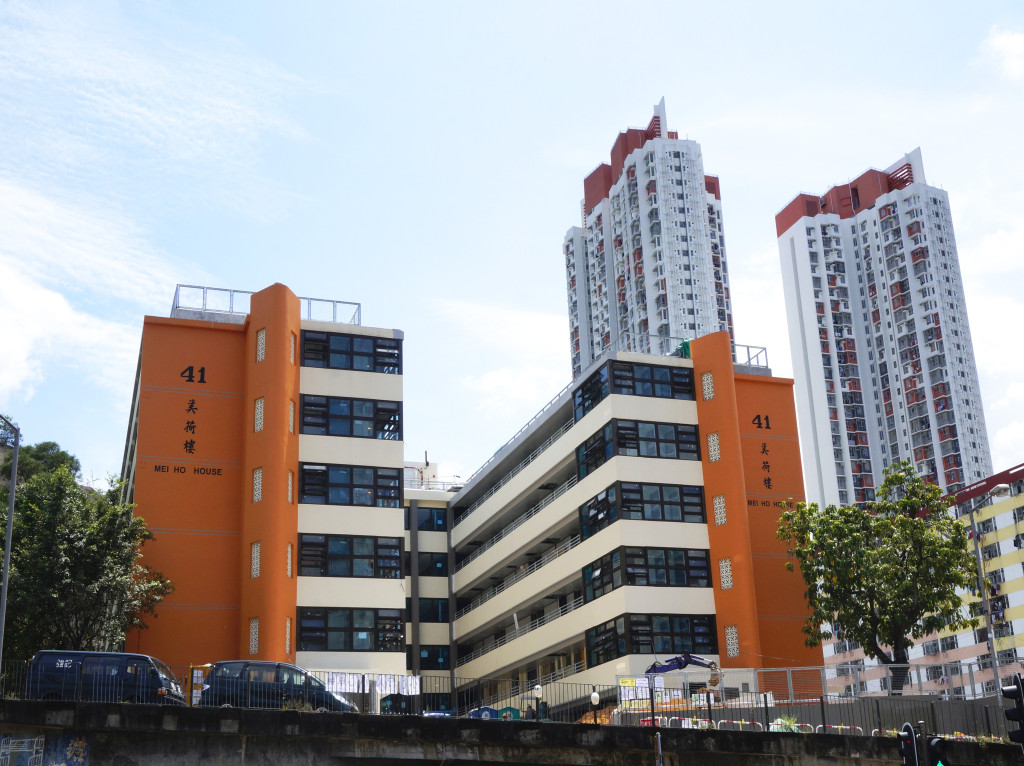
On Christmas Night 1953, a fire broke out in the district of Shek Kip Mei, leveling a slum and leaving 58,000 people homeless. The government immediately set to work temporarily resettling the destitute while isolating the root of the problem. Poor sanitation and infrastructure, combined with the many refugees living in abject conditions as squatters, convinced the colonial government to pursue the development of public housing.
It was with subsidized public housing that Hong Kong’s prosperity and urban form took shape. Using government and resettlement programs, the Hong Kong Housing Authority was able to offer most of the poor population homes.
In turn, these residential blocks, conceived of as single-use, became vibrant communities. Ground level floors became areas to shop and set up markets. Roofs became ideal spots for cottage industry, schools and playgrounds. The economy of space, a sense among the people that given limited space and resources public and private life should be organized as efficiently as possible, became the very basis of Hong Kong urbanism.
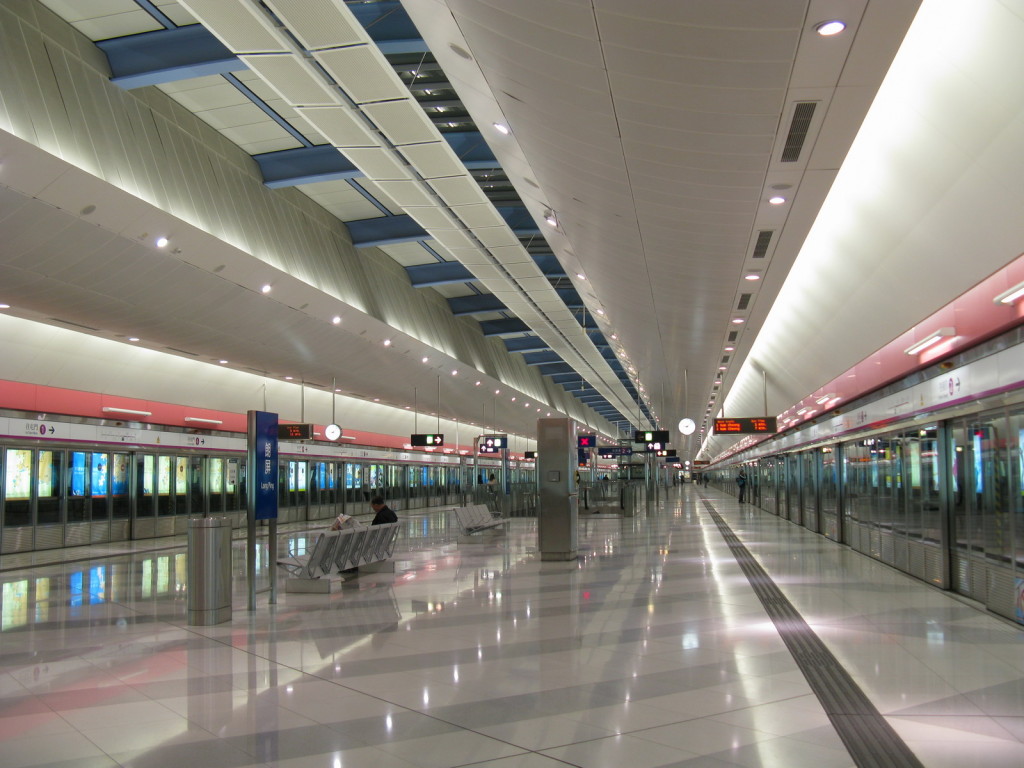
Hand-in-hand with the economy of space came the question of connectivity. There was a need to link the old central districts of Central and Kowloon Peninsula with other expanding communities on the fringes of the city. Again, the government took many initiatives, constructing tunnels connecting Hong Kong Island to Kowloon and other highways that traverse difficult mountainous terrain.
Most importantly perhaps, the government set the groundwork for the Mass Transit Rail (MTR) system. A luxury at first, the MTR system has grown to become a staple system for the lives of Hong Kong’s citizens. Fast service and clean stations well connected with different landmarks in their respective districts are characteristic of the MTR, and given the difficulties of parking, most citizens came to rely on the MTR and buses. 90% of Hong Kong’s vehicular transportation is, in fact, public. Side benefits of such connectivity are public spaces becoming thriving pockets of social interaction.

Forests and oceans are never far from Pokfulam District. Buildings here adapt to the hills and mountains, using extensive elevator, escalator, walkways and promenade systems to create convenient paths while always keeping a sense of nature. August 2011. (Author’s own)
Despite these urban triumphs, Hong Kong has also managed to practice harmony with the environment. 40% of Hong Kong’s limited land is protected by the government as state parks. In 2010, Hong Kong emitted about 5.2 metric tons of CO2 emissions per capita, significantly lower than the American average of 17.6 metric tons per capita. This is in no doubt attributable to Hong Kong’s reliance on public transportation and the preservation of green spaces.
Hong Kong has also developed many creative architectural solutions to accommodate the environment. One example is the Soho escalators aforementioned. Another well-known example is buildings with holes in the middle. Designed with Feng Shui principles in mind, the buildings also help solve the “wind wall” problem Hong Kong Island has experienced. Due to the high number of high-rises, natural wind was not reaching the mountain vegetation behind the skyscrapers, causing them to wither and the local ecosystem to suffer. While not a perfect solution, buildings constructed with the ‘Feng Shui hole’ help mitigate this since wind can pass freely through the center.
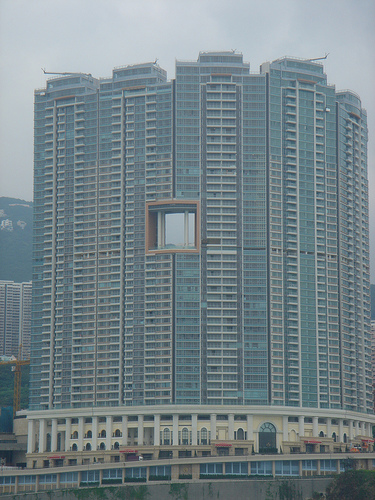
It is clear that in current times, as more people move to urban environments and resources become more limited, Hong Kong offers powerful ideas for the future of cities. Urbanists in America are just now starting to realize the harmful side effects of urban sprawl. Environmental degradation, wasteful use of space and inefficient public transportation are only some of the problems facing many American cities.
This does not mean that solutions that worked in Hong Kong can work in any other city in the world, but if there are two lessons the city of Hong Kong can teach to the world it is these:
1) Some of the best long-term innovative solutions to problems today can be achieved through careful interplay between socially-conscious governmental actions (a reactive, establishing force: the construction of public housing and of the MTR metro system) and bottom-up entrepreneurial behavior (a proactive, expanding force: the conversion of single-purpose housing to efficient and productive communities, the transformation of MTR stations from merely transportation centers to commercial ones and the formation of creative architectural designs in harmony with traditional Chinese culture and Hong Kong’s environment and topography).
2) There is value in the ideas of the economy of space, increased connectivity and harmony with the environment. Hong Kong’s urbanism is an experience that forces a rethinking of current urban modes. In Hong Kong, efficient public transportation led to not only some alleviation of traffic and environmental pressures, but also strong, healthy civic places full of life and social activity in central districts. Hong Kong’s solutions cannot apply everywhere because not every city is a dense rock in the ocean. However, these three ideas are important components in sustainable development, and can help reverse the decline of inner cities and downtowns across the United States.
For those interested in reading more on Hong Kong urbanism, I suggest a visual guidebook called Cities Without Ground, which shows three-dimensional maps of Hong Kong, and The Making of Hong Kong: From Vertical to Volumetric, which provides a succinct planning history of the city, including architectural illustrations.
The views expressed by these authors do not necessarily reflect those of the Glimpse from the Globe staff, editors, or governors.


